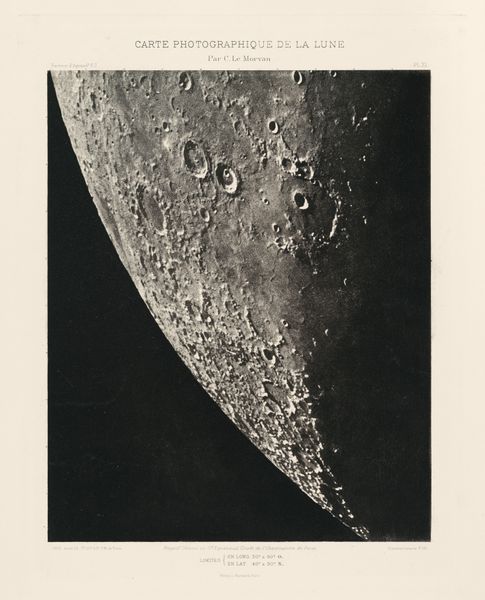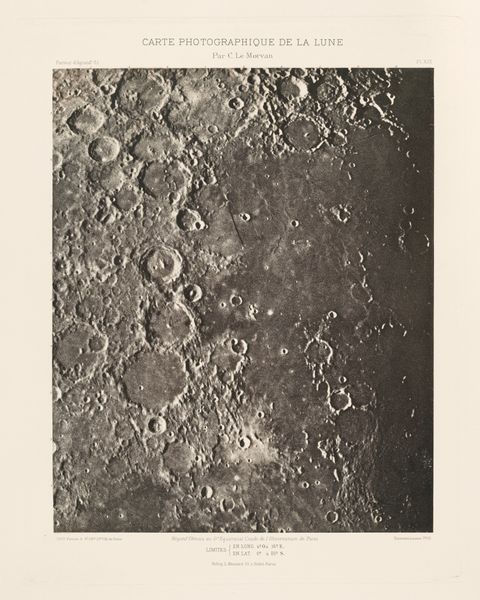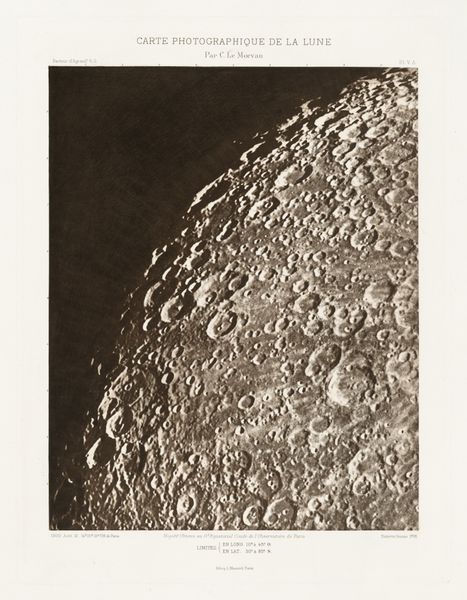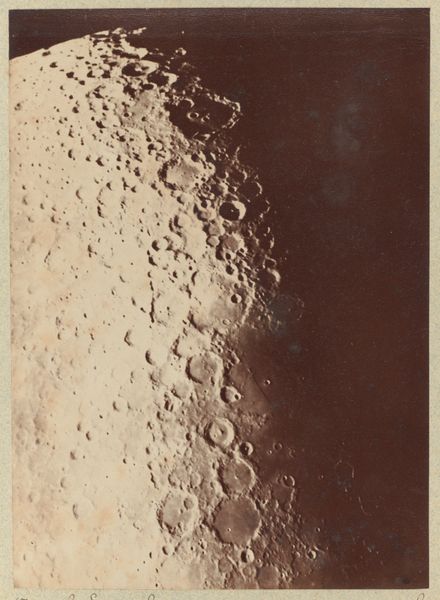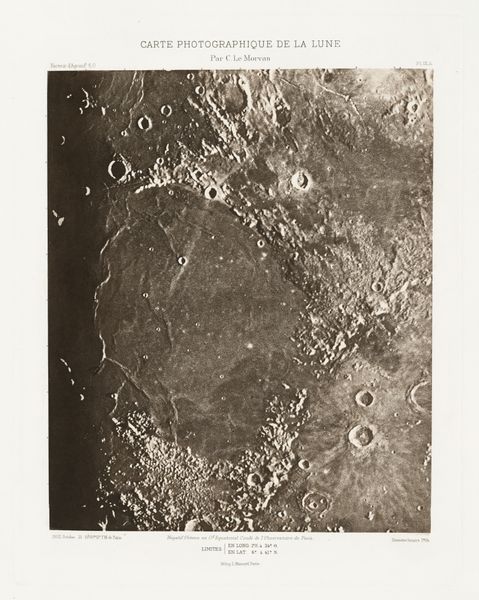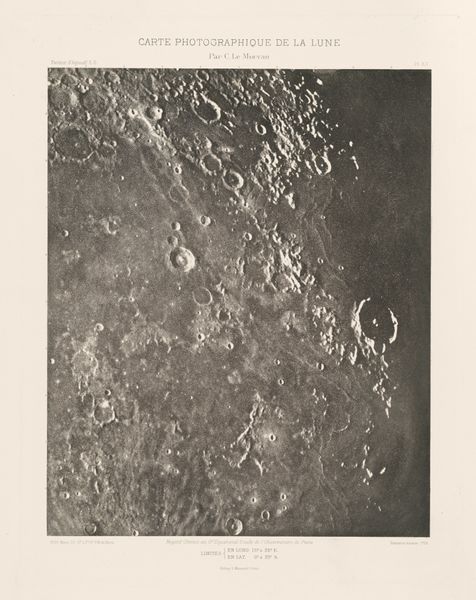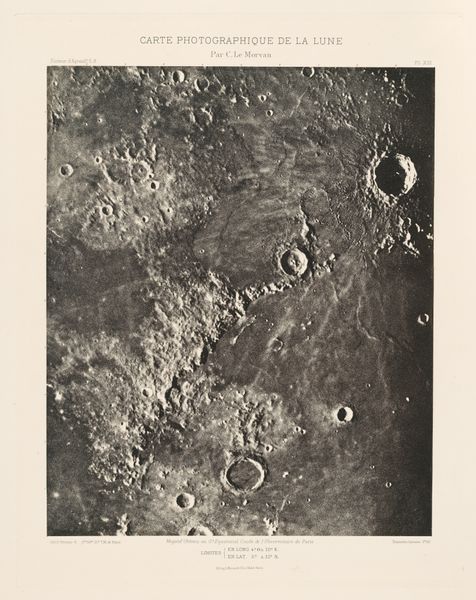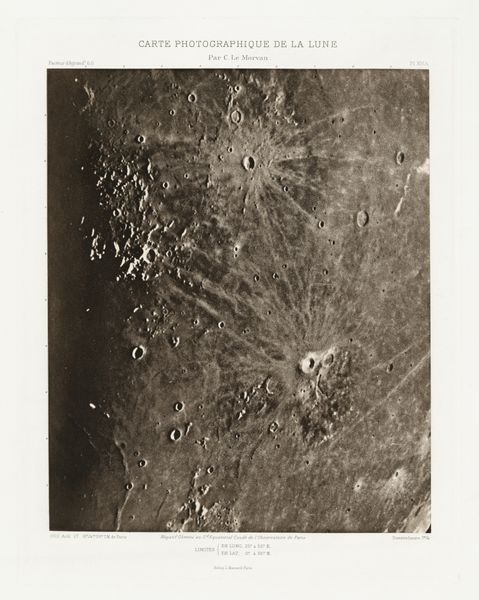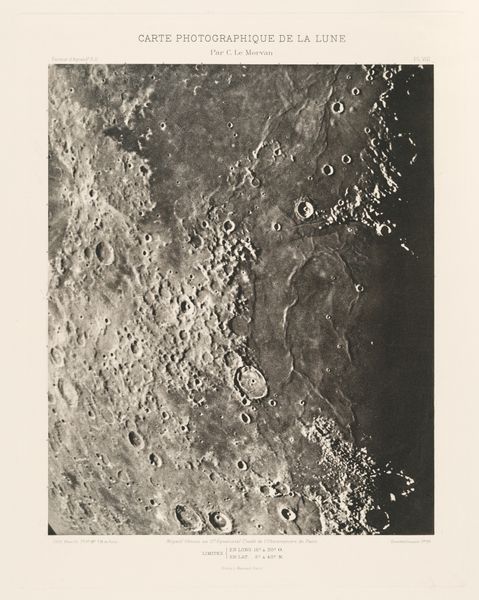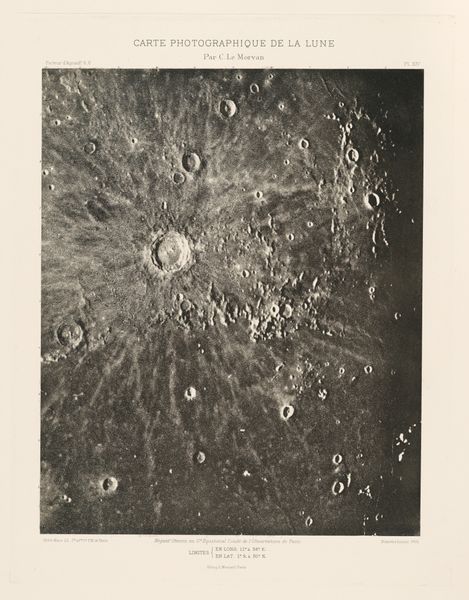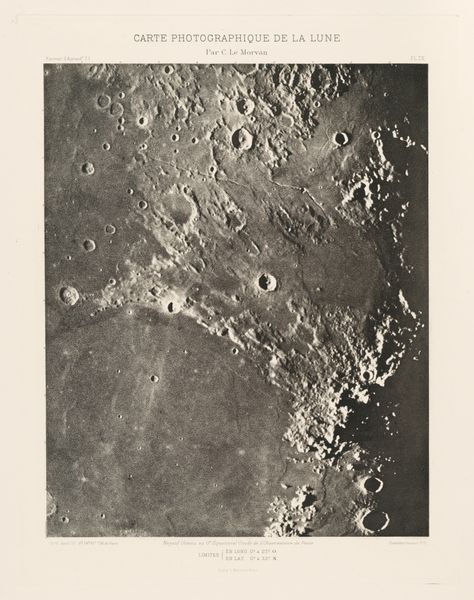
print, photography, gelatin-silver-print
#
pictorialism
# print
#
landscape
#
photography
#
gelatin-silver-print
#
modernism
Dimensions: image/sheet: 22.7 × 16.4 cm (8 15/16 × 6 7/16 in.) mount: 31.7 × 24.2 cm (12 1/2 × 9 1/2 in.)
Copyright: National Gallery of Art: CC0 1.0
This photographic print of the moon's surface was produced in France on March 28, 1890, from the Paris Observatory, likely using a process called 'photogravure'. What makes this image so striking is how the scientific gaze intersects with the artistic. The photograph was produced during a period of intense scientific advancement and discovery and the rise of photography was linked to this. New technologies, such as large telescopes and sophisticated darkroom techniques, allowed for unprecedented views of the cosmos. It raises questions about the relationship between science and art. Does this image represent an objective record of the moon, or does it reflect the cultural and aesthetic values of the time? The sepia tone, the careful composition, and the elegant typography all suggest a deliberate artistic sensibility. To understand this image more fully, one would need to delve into the scientific literature of the time and the institutional context of the Paris Observatory, as well as the history of photography as both a scientific tool and an art form.
Comments
No comments
Be the first to comment and join the conversation on the ultimate creative platform.
